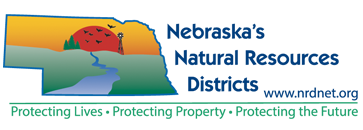Protect Water During Drought with the Lower Loup NRD
Protect Water During Drought with the Lower Loup NRD
This article was originally written by Alan Bartels, Lower Loup NRD Information & Education Coordinator, for the Loup Lines
Loup Lines
Volume 46, No. 8 (August 2025)
ORD, Nebraska -- Drought conditions have improved considerably across the Lower Loup NRD in recent months.
According to the U.S. Drought Monitor map released on July 24, 2025, no portion of Nebraska was rated Extreme Drought (D3) or Exceptional Drought (D4). That map showed drought levels ranging from Abnormally Dry (D0) to Moderate (D1) across much of the state, with all or parts of 20 counties experiencing Severe drought conditions (D2), and 21 counties showing drought intensity rated as None.
It can be easy to become complacent when rains return. The truth is, drought conditions will return, too – they always do – and conserving water now makes the lean times a little less so. As a finite natural resource, water conservation should always be common practice. Anything else is irresponsible.
There are many ways to save water. Homeowners can make sure their sprinklers are only watering their lawn or garden and not spraying onto sidewalks, onto the neighbor’s lawn, or into the street.
Programmable underground sprinklers are often allowed to keep chugging even when additional water is not needed. I’m reminded of a lush lawn I pass during my daily commute. Multiple times this spring and summer I’ve seen the sprinklers running even though rain had soaked the area repeatedly over the previous couple weeks. One morning as I passed by it was raining hard, the ditches and streets were overflowing with the deluge, and those sprinklers were still running.
Adjusting and/or shutting off these systems when not needed saves precious water, and saves money in terms of utility costs. I can see where adjusting the settings once they are programmed could be an inconvenience, but wanton waste of water is simply unacceptable. Besides, intentionally overwatering doesn’t make sense since overwatered grass is prone to disease.
The same discipline in controlling watering systems can also be applied to agricultural irrigation, and these days adjusting irrigation systems can be as simple as using a smartphone app.
According to University of Nebraska Extension, irrigating between 5 a.m. and noon results in less water lost to evaporation.
Homeowners and agricultural producers both can save water by watching the weather forecast. The weatherman isn’t always right, but when conditions allow, if rain is in the forecast, waiting to water the lawn or fire up center pivots can save work while also providing water savings and the associated financial benefits. And not over-irrigating farm fields keeps precious fertilizer in the root zone where plants can use it. Apply too much water and that fertilizer can end up in the aquifer where it threatens human health.
Conversion from gravity irrigation to sprinkler irrigation is another proven water saver. “A center pivot is 90% efficient compared to the gravity pipeline, which is only 65% in getting water on the crops,” said Curtis Scheele, a conservationist with the Natural Resources Conservation Service.
Federal funds are available to help producers make the switch. The Environmental Quality Incentives Program (EQIP) is a voluntary conservation program that helps agricultural producers in a manner that promotes agricultural production and environmental quality as compatible goals. Through EQIP, agricultural producers receive financial and technical assistance to implement structural and management conservation practices that optimize environmental benefits on working agricultural land. Contact your local NRCS office to learn about this and other conservation programs.
Water is precious, finite, and we should protect every drop. We will need it.
